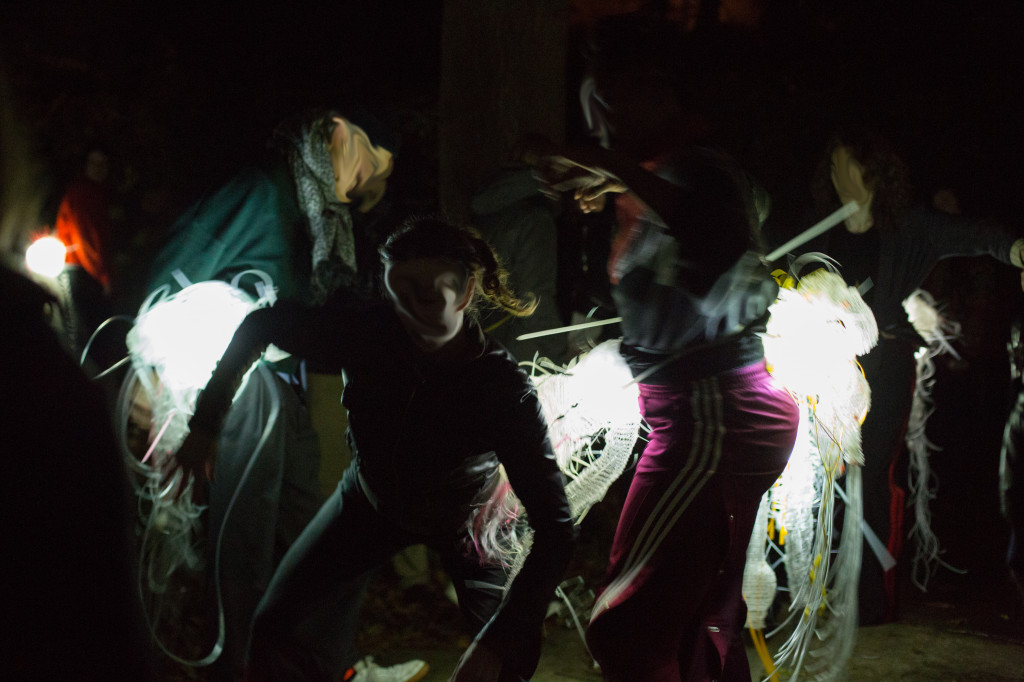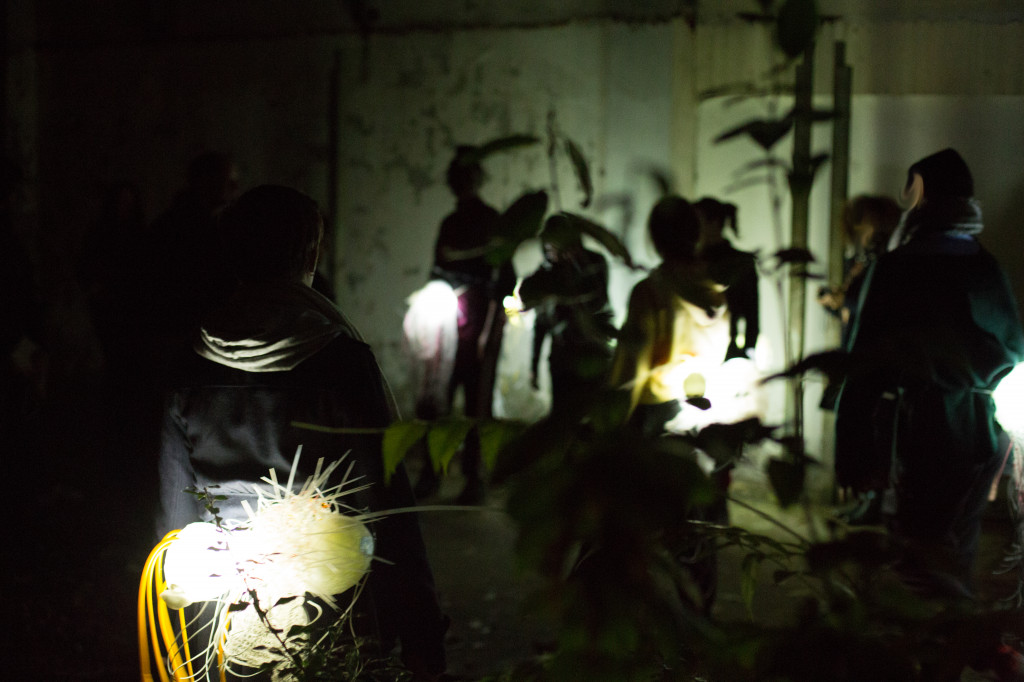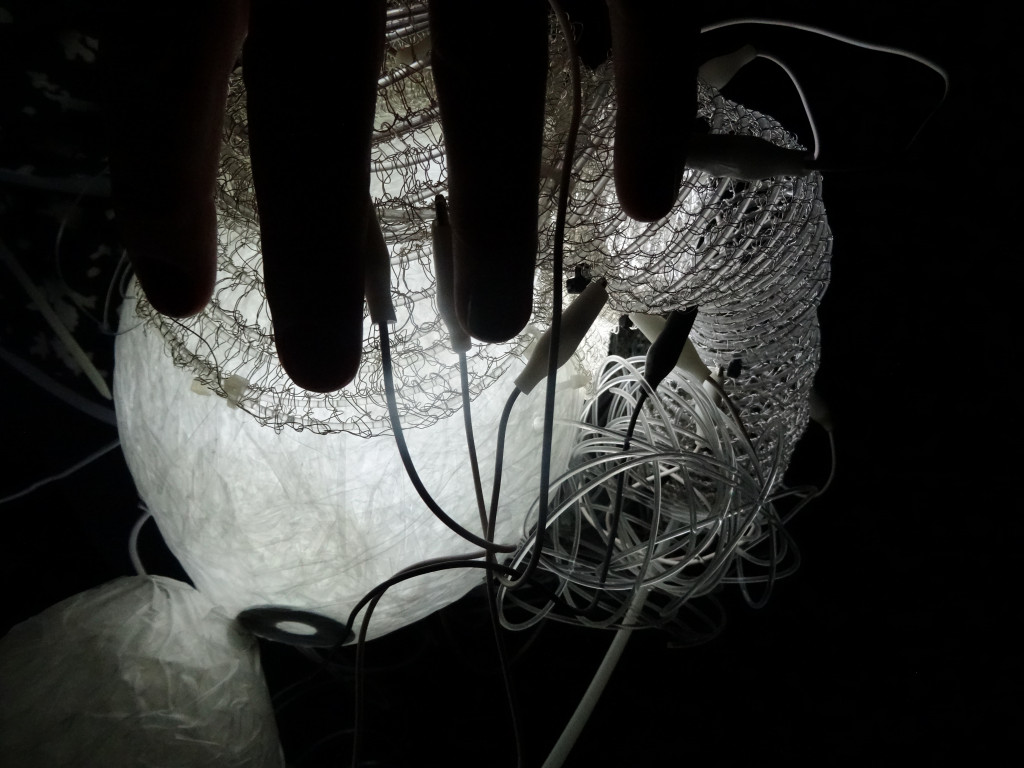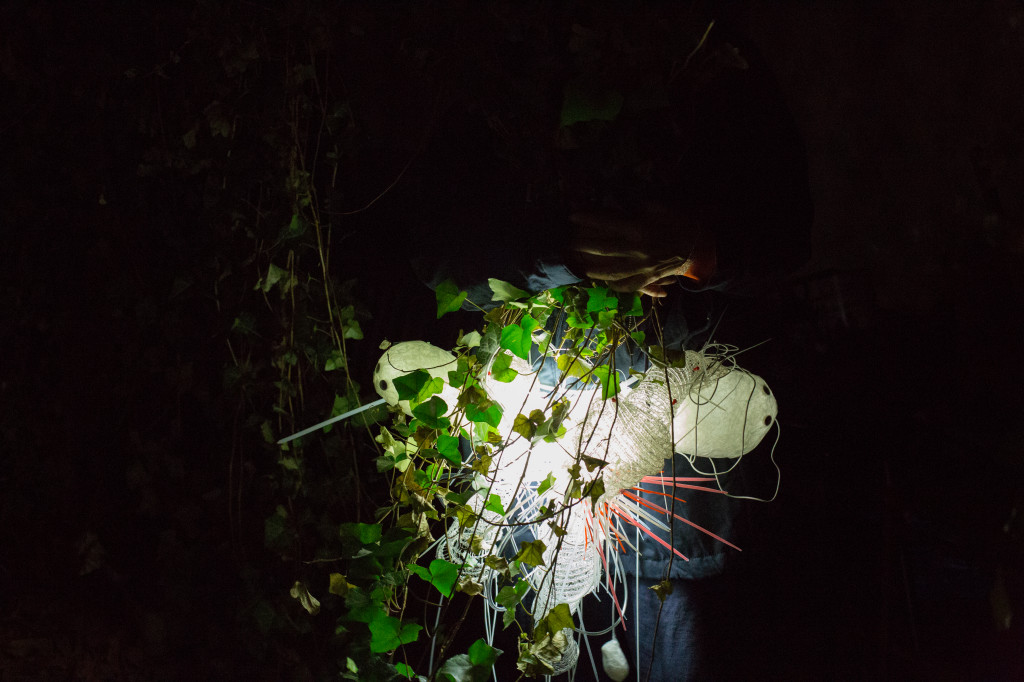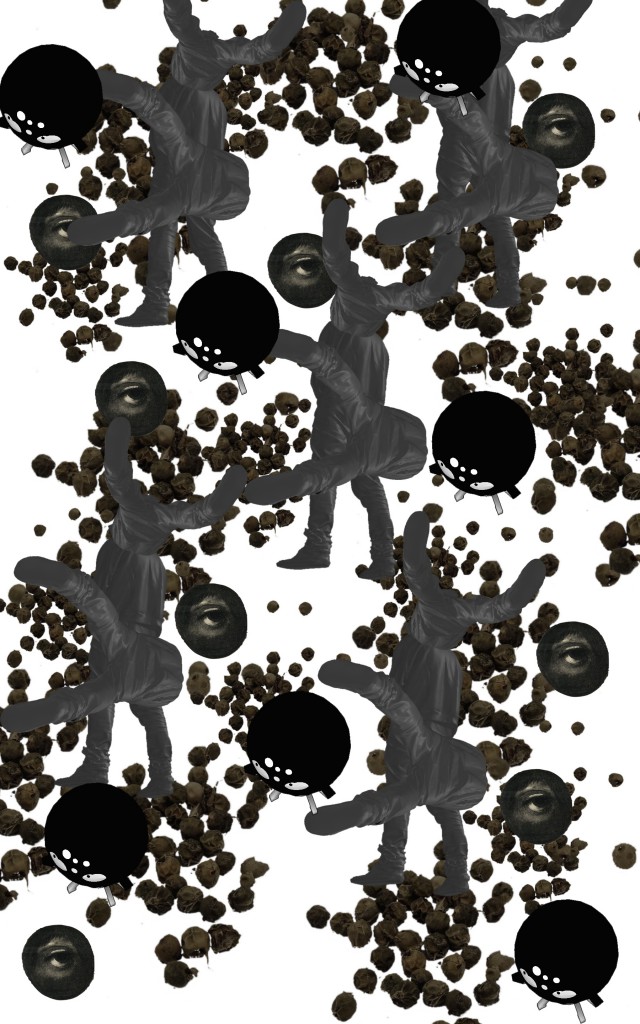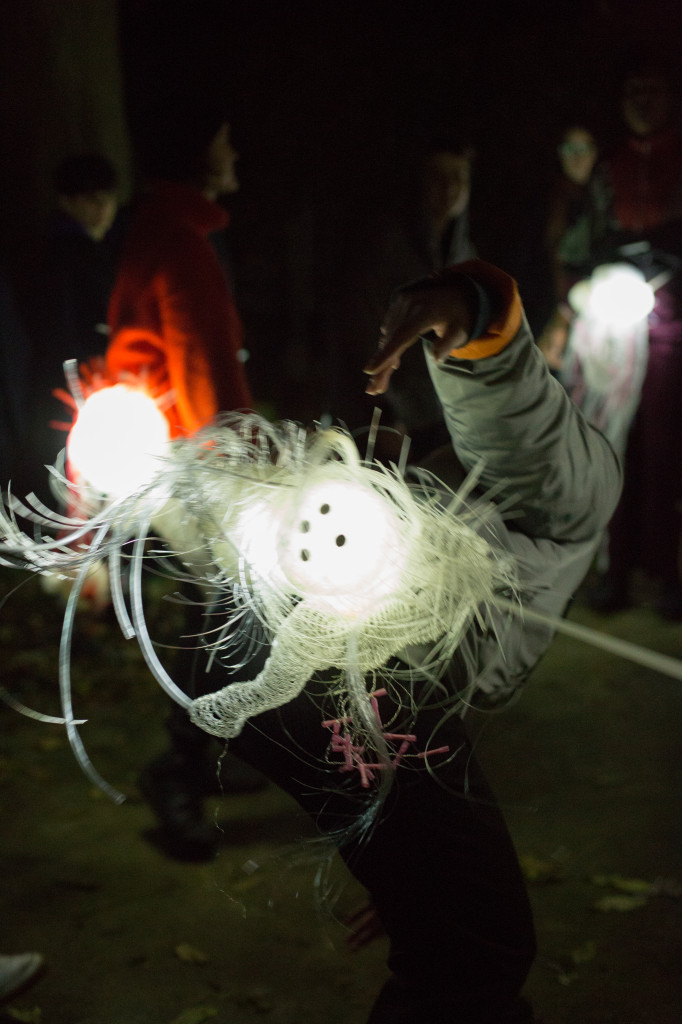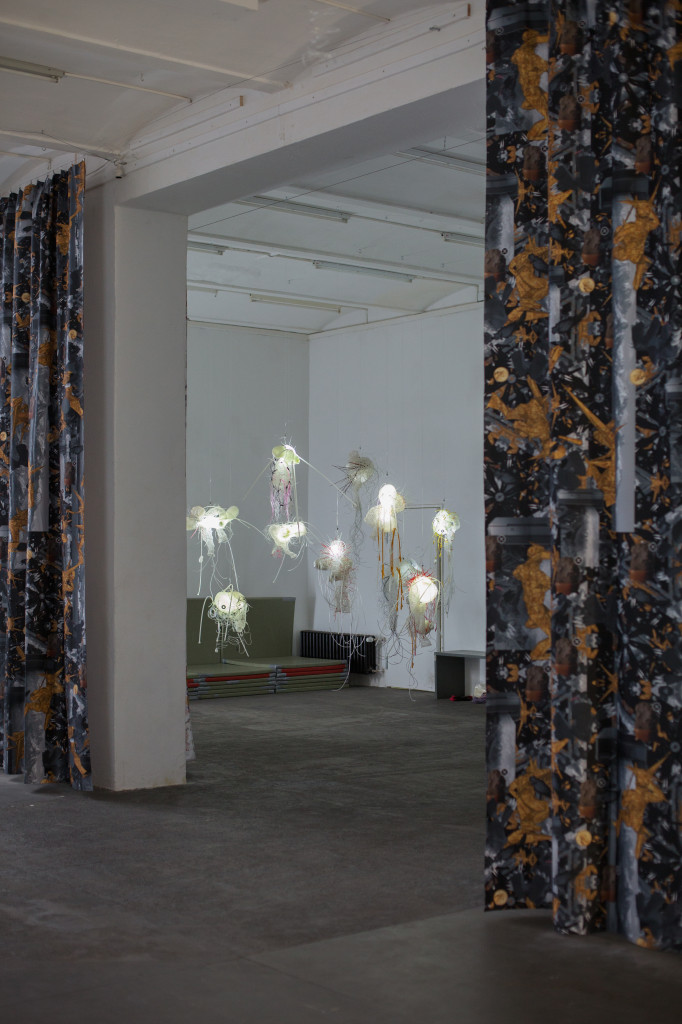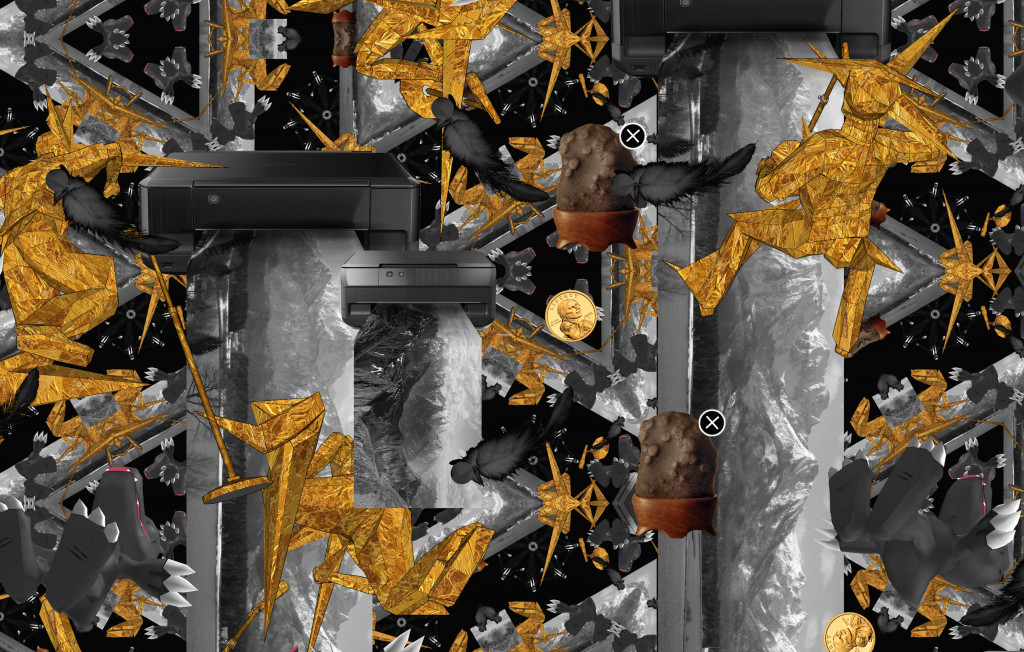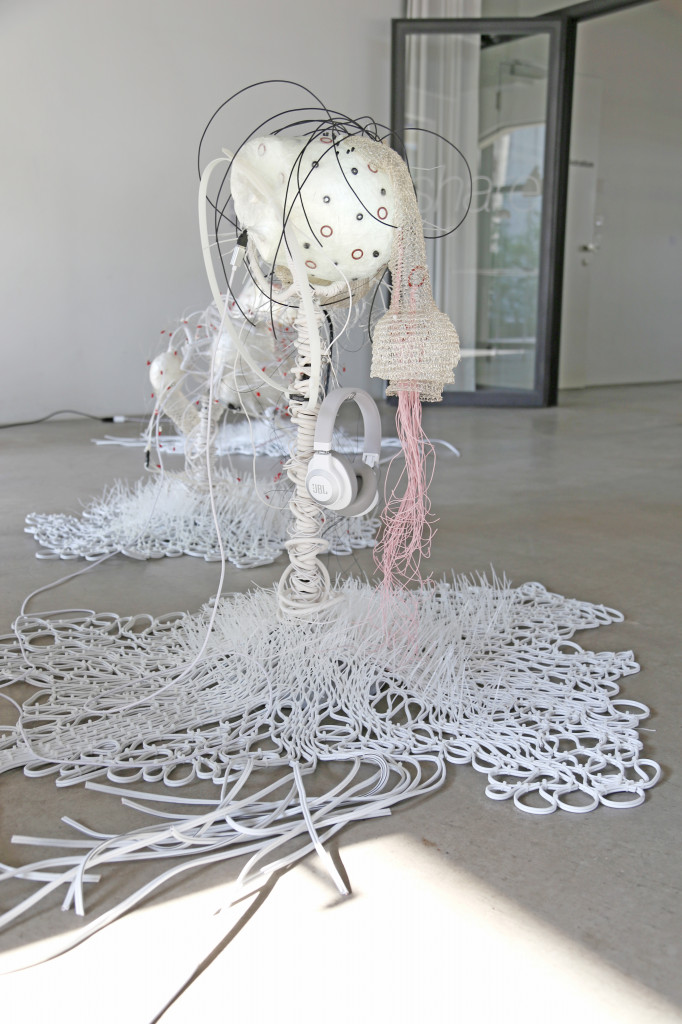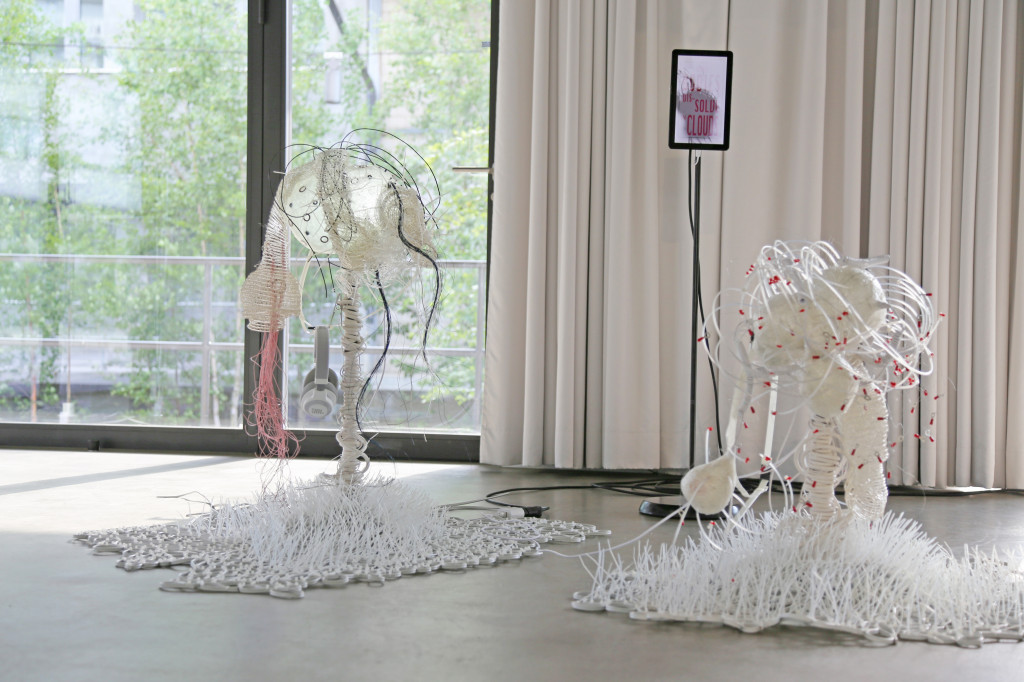manYdancing mix by Lamin Fofana
manYdancing the molecular ornaments re-assembles those body practices of the early 20th century with the crisis-like experiences of a present in which algorithmic governmentalities and biotechnologies fragmentize and molecularize the bodies. How to articulate current experiences of ornamentation, dissolution and abstract formlessness? Will parodistic, carnivalesque and ecstatic ghosts access our posthuman bodies? Will today’s choreo-political unrest unleash or return to the monstrosities of slowness, laziness telling us that there is a wild beyond to the structures we inhabit and that inhabit us?
HEK Basel 2019 (Pax Art Award), manYdancing the molecular ornaments, dance floor modul v.1; installation
Archive Kabinett, Berlin 10. – 17. Nov 2018, workshop, performance with Alesandra Seutin and Lamin Fofana
HKW Berlin 9. – 13. Jan 2019, workshop, performance with Claudia de Serpa Soares and Lamin Fofana
What do techno-ecological bodies divided into functions, metadata and molecules tell us? How do they encounter the de-subjectification, formability and fungibility? The two-day workshop will focus on body knowledge—together with the workshop participants we want to develop a vocabulary of undisciplined movements and collective bodies. It will re-enact and critically fabulate references to „the epileptic white European dancing subjects“, who in the 1920s wanted to shake off the nihilism and madness of World War I as a collective „hysteric jumping and shaking mass“. Post-slavery dance forms entered as urban, animal or social dances the variety shows and music halls of Berlin and Paris and opened up queer lines of subjectivation of blackness, femininity and working class conciousness. They allowed the nervous and disoriented bodies to emancipate from the various anthropological insults provoked by Darwinism, colonialism, feminism and psychoanalysis.
manYdancing, knowbotiq 07/20
knowbotiq’s manYdancing imagines dancing collective bodies with workshops, performances, and installations. Momentary encounters, relations of closeness, and surface structures are generated for various actors who want to let themselves be affected. In these situations, bodies and skins are augmented by fictive, molecular, everyday prostheses while techno-logical, techno-imaginary bodies are fabulated through metamorphoses. The praxis of manYdancing responds to everyday forms of control, surveillance and conditioning cadences in western urban worlds of work and care.
These types of prosthetic accumulations of corporealities, under and on the skin, open up movements between diverse forms of subjectivation, between humans and nonhuman agents such as animals, plants, cells, hormones, and algorithms. Many organic bodies are already augmented by insulin sensors, pacemakers, epidermal electronics, and medications, or modulated by RFID chips. Things such as these measure body activities, administer artificial hormones, and regulate microbiological processes. Virus cultures, biomes, mycelia, and microplastic conglomerations form symbiotic collectives. manYdancing everts all these fabrics and symbioses, and makes them vibrate. The bodies it addresses are rarely part of social imaginations. It intensifies sensibilities, enlarges contact zones. Are we ready for tilting aggregate states and unexpected assemblages?
manYdancing resonates with various forms of work, of touch, and of dancing movement: wage labor continues to shape identity in the increasingly automated world of work, and decisively influences our body concepts. Touch, which is the very foundation of most functional and libidinous social fabrics, expands bodies, infects and affects them. Undisciplined, danced movements become sensual, syncopated impulse givers within the modulations of algorithmic institutions.
Wage labor demands a specific, educated, and optimized body and, together with the means and materials of production, it molds a fabric that is continually and boundlessly analyzed and “improved.” A cognitive capitalism likewise connects most occupations with strong affects and touches—touches that are experienced via the skin, the largest sensory organ. In posthuman prosthetic bodies, the skin forms sensitive zones for inwardly and outwardly directed molecular negotiation. This surface organ is the site of the most intimate experiences and simultaneously, as Sara Ahmed has described, the most public interface for struggles of class, gender, and anti-racism. The skin as a “nervous” organ and relay influences how molecules are set in motion, how unexpected aggregate states and symbioses arise and interact.
manYdancing stimulates interferences between organic and inorganic parts in the skin of those who are dancing. It seeks to trigger an expanded body knowledge and imaginings of collective bodies. To make these experiences possible, knowbotiq designed (dermal-) prostheses and deployed them in manYdancing workshops in November 2018 at Archive Berlin, and in January 2019 at Haus der Kulturen der Welt, Berlin. These were multipartite object assemblages composed primarily of mass-produced plastic items such as reaction vessels, plastic droppers, PVC tubes, sensors, and communication cables. By means of these materials, biological life is manipulated, and synthetic life is produced at the workstations of global laboratories. Those polymers, phthalates, UV stabilizers, polycarbonates, or flame retardants whose molecules are not bound to laboratory objects often pervade their users’ endocrinological processes.
In the workshop situation, these prostheses are worn on the body and enable contact and exchange with the surfaces of other actors, be these manYdancers, materialities, architectural elements, or sonic events. The temporary collective of the workshop invites workshop participants therein to imagine themselves as everted techno-aesthetic bodies to be tried out in undisciplined danced movements. To the rhythms of Lamin Fofana’s tracks, manYdancers improvise with bodily-formulated invitations, formations, symbioses in order to aggregate, to conglomerate, and once again to separate. Bodily alliances that test their own stamina may take shape: sensual, dancing forms of touching critique—a sensory mode of thinking through extended skin, as a being-with and being-for of bodies in a algorithmically analyzed present.



